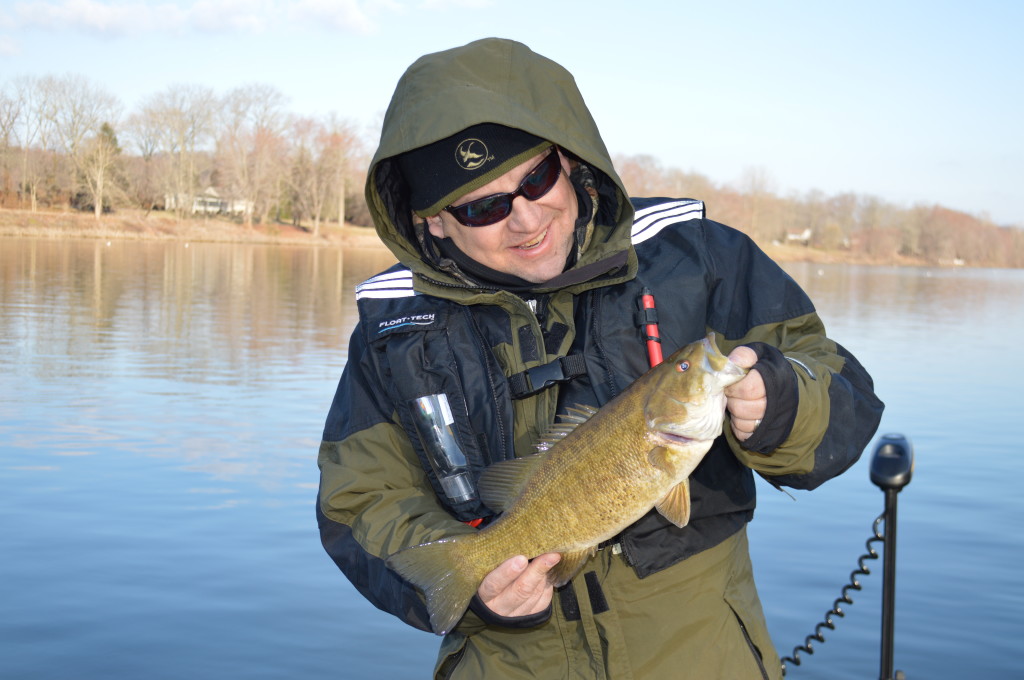
After a long and dreary winter, many anglers can’t wait for spring to arrive, bringing warmer weather and active fish. But early spring fishing for smallmouth bass can be challenging, with high water levels and strong currents making it difficult to find and catch fish. However, with the right tactics and techniques, early spring smallmouth fishing can be incredibly rewarding. In this article, we’ll share some tips and techniques to help you catch more smallmouth bass in the early season.
The Right Time and Weather
One of the most important factors to consider when fishing for smallmouth bass in early spring is the weather. When the water is still in the 40s or low 50s, smallmouth bass are primarily looking for warmer water and escape from strong currents. After a few days of sunny weather, the water temperature can rise by 5° or more, significantly increasing fish activity.
The right time to fish for smallmouth bass in early spring is after a few consecutive days of good weather. Keep an eye on the weather forecast and plan your fishing trips accordingly. If the weather has been consistently warm and sunny, the fish will be more active and feeding, making it easier to catch them.
The Right Locations
In early spring, smallmouth bass are not yet thinking about spawning. Instead, they are looking for warmer water and escape from strong currents. The right locations to find smallmouth bass in early spring include large eddies in slackwater areas, creek mouths that are a few degrees warmer than the river, and slack areas below dams.
Large eddies are prime holding areas for smallmouth bass in early spring. Look for eddies created by a sharp bend in the river or caused by a big rocky point that diverts the current away from the shore. Slack areas below dams are also great hotspots, as forage is abundant below them, and the water coming over the structure is likely warmer. Dams can be particularly good because they are accessible from shore even when rivers are high and boating is unsafe.
Creek mouths that are a few degrees warmer than the river itself are smallmouth magnets in early spring. If the river is high and backed up into the tributary, the smallies may be up the feeder creek, so try upstream of the mouth. Even much smaller flows like the drainage from culvert and tile outlets will attract smallies if they are a few degrees warmer. Even small drainage ditches can be great smallmouth holding areas.
The Right Baits and Techniques
When fishing for smallmouth bass in early spring, slow and deep is the way to go. Use jigs, suspending jerkbaits, and bright colored spinnerbaits to entice strikes. When the water is off-color, use spring colors like white, yellow, and chartreuse. When the water is clear, try black or other dark colors.
Jigs are often very productive and can allow you to cover more water. Slow-rolling bright-colored spinnerbaits can be highly effective at triggering strikes in early spring. Suspending jerkbaits like the Rapala X-rap or Lucky Craft can get you plenty of strikes if you twitch and pause, allowing the current to work its magic. Make your pauses several seconds long. To improve your strike detection with these ultra-slow retrieves, use braided fishing line with a fluorocarbon leader.
Be patient when fishing for smallmouth bass in early spring. They can be slow to bite, so use slow retrieves and long pauses to entice strikes. Cover more water by using jigs, tubes and swimbaits to find smallmouth bass hiding in eddies or slack areas. Suspending jerkbaits are also great for covering water and triggering strikes. Also try using swimbaits, fished very slowly or bounced off the bottom.
Fish at different depths until you find where the fish are holding. Smallmouth bass can be found at different depths in early spring, depending on the water temperature and current. If the water is warmer near the surface, try fishing with topwater lures or shallow-running baits.
One technique that can be especially effective in early spring is slow-rolling a spinnerbait along the bottom. Make sure to keep the spinnerbait in contact with the bottom and vary your retrieve speed until you find what the fish are responding to.
Be Safe
Early spring can bring high water levels and strong currents, making it important to take appropriate safety measures. Always wear a life jacket, avoid wading in fast-moving water, and be aware of any potential hazards such as submerged rocks or logs. If you’re unsure about the safety of a particular area, it’s better to err on the side of caution and fish somewhere else.
In addition to safety precautions, it’s also important to practice catch-and-release fishing in early spring. Smallmouth bass are still recovering from the winter and are more susceptible to stress and injury. Use barbless hooks and handle the fish gently before releasing them back into the water.
Fishing for smallmouth bass in early spring can be challenging, but it can also be incredibly rewarding. By targeting the right locations, using the right baits and techniques, and being patient, you can catch more smallmouth bass in the early season. Remember to take appropriate safety measures and practice catch-and-release fishing to ensure that these amazing fish continue to thrive for generations to come. With the right approach and a bit of luck, you can experience the thrill of hooking into a hard-fighting smallmouth bass during the early spring season.


